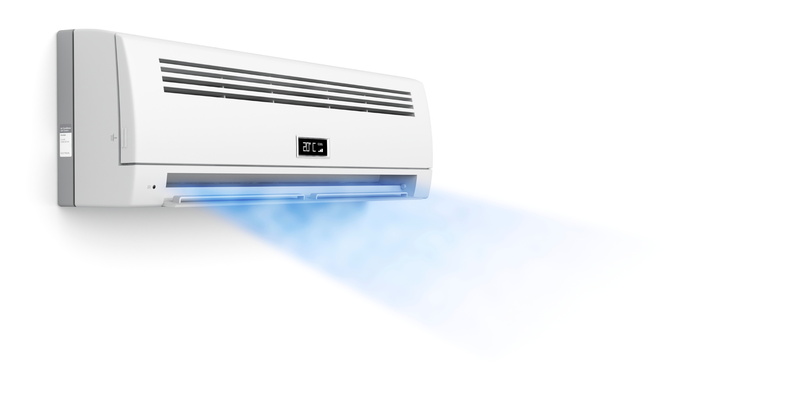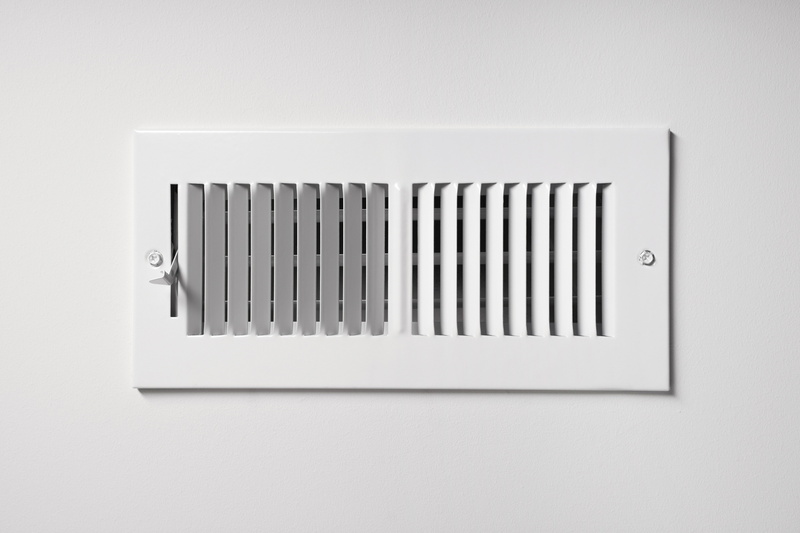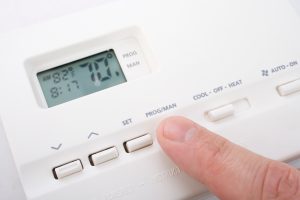When you install a new air conditioner for your home, you will likely receive a system with improved energy efficiency over your older system. However, you don’t have to let the benefits end there. As part of installation, you can choose some additional upgrades for your HVAC system to improve performance and increase energy efficiency.
Comfort Flow Heating has performed air conditioning installations in Springfield, OR for more than 50 years. We know many ways to upgrade your AC system that help you get the most from your cooling.
We’ve listed some of your options below; to find out more, contact one of our cooling specialists today.
New Thermostat
If you’ve had your current air conditioner for more than 10 years, you probably have an outdated thermostat controlling it. If you still use a manual thermostat, now is the time to switch to a more precise digital model. If you already have a digital model, you can upgrade to one with programmable features that will allow you control the temperature even when you are away from home. A new thermostat will make your life easier, your comfort better, and your utility bills lower.
Zone Control System
With a central air conditioning system that uses ductwork, you must cool down every room whenever the AC turns on. But installing a zone control system into the ventilation changes that. Dampers placed into the ductwork and connected to separate thermostats allow you to shut off cooling to different areas (“zones”) of the house, saving you money and allowing individuals to adjust the temperature in their area to their needs.
Heat Pump
This is an upgrade for your whole system, and for your comfort during the whole year. Instead of putting in another standard air conditioner, you can choose to install a heat pump. A heat pump works the same way as an air conditioner—except that it can reverse the direction that it moves heat and bring heat into your home. So it works as both an air conditioner and a heater, packed into one unit. It works more efficiently than most heaters as well.
Comfort Flow Heating can install all of this and more for your air conditioning installation in Springfield, OR. We also strongly recommend that you sign our Energy Savings Agreement, which will delivery you annual maintenance for both your air conditioning and heating system to make sure they work in prime condition for many years. We offer 1-, 2-, and 3-year agreements, so you can select the plan that best suits your budget. In addition, the Energy Savings Agreement provides a 15% discount on repairs, 24-hour emergency service, and priority customer scheduling.
Continue Reading
Tags: Air Conditioning Installation, Springfield
Posted in Air Conditioning | Comments Off on Upgrades to Consider During Air Conditioning Installation


 The ductless mini split heat pump is an increasingly popular choice for both homes and businesses. For new residential and commercial building construction, a ductless system allows for more freedom in building and designing. A ductless mini split uses an outdoor unit (or more than one outdoor unit depending on how large the space they need to condition is) that connects to up to 8 indoor air handlers per outdoor unit. Each of the indoor air handlers contains a refrigerant coil and blower fan to send cooled or heated air directly into the living space.
The ductless mini split heat pump is an increasingly popular choice for both homes and businesses. For new residential and commercial building construction, a ductless system allows for more freedom in building and designing. A ductless mini split uses an outdoor unit (or more than one outdoor unit depending on how large the space they need to condition is) that connects to up to 8 indoor air handlers per outdoor unit. Each of the indoor air handlers contains a refrigerant coil and blower fan to send cooled or heated air directly into the living space. We’re in the race toward summer. Why is it a race? Because the time is shortening when you can have air conditioning services like repairs and upgrades done before the hot weather arrives and AC work is much less convenient. It’s especially important to act fast on spring AC jobs if you think you need to have a new air conditioner put in.
We’re in the race toward summer. Why is it a race? Because the time is shortening when you can have air conditioning services like repairs and upgrades done before the hot weather arrives and AC work is much less convenient. It’s especially important to act fast on spring AC jobs if you think you need to have a new air conditioner put in.  This is a question that we sometimes hear from homeowners. When utility bills start to climb during the summer and winter because the cooling and heating system has to work more often, people wonder if closing the shutters of the rooms vents will help cut down on costs. The idea may make some sense initially—but the truth is that not only won’t this help reduce costs, but it can cause damage to the HVAC system. You don’t want to close off or block any of the room vents in your home.
This is a question that we sometimes hear from homeowners. When utility bills start to climb during the summer and winter because the cooling and heating system has to work more often, people wonder if closing the shutters of the rooms vents will help cut down on costs. The idea may make some sense initially—but the truth is that not only won’t this help reduce costs, but it can cause damage to the HVAC system. You don’t want to close off or block any of the room vents in your home.  It’s always tempting to update to the newest and “shiniest” piece of technology available. But it isn’t always the best path to take. When it comes to comfort in your house, you should be cautious of trying to make any updates to your HVAC system that aren’t done in connection with trained professionals.
It’s always tempting to update to the newest and “shiniest” piece of technology available. But it isn’t always the best path to take. When it comes to comfort in your house, you should be cautious of trying to make any updates to your HVAC system that aren’t done in connection with trained professionals.